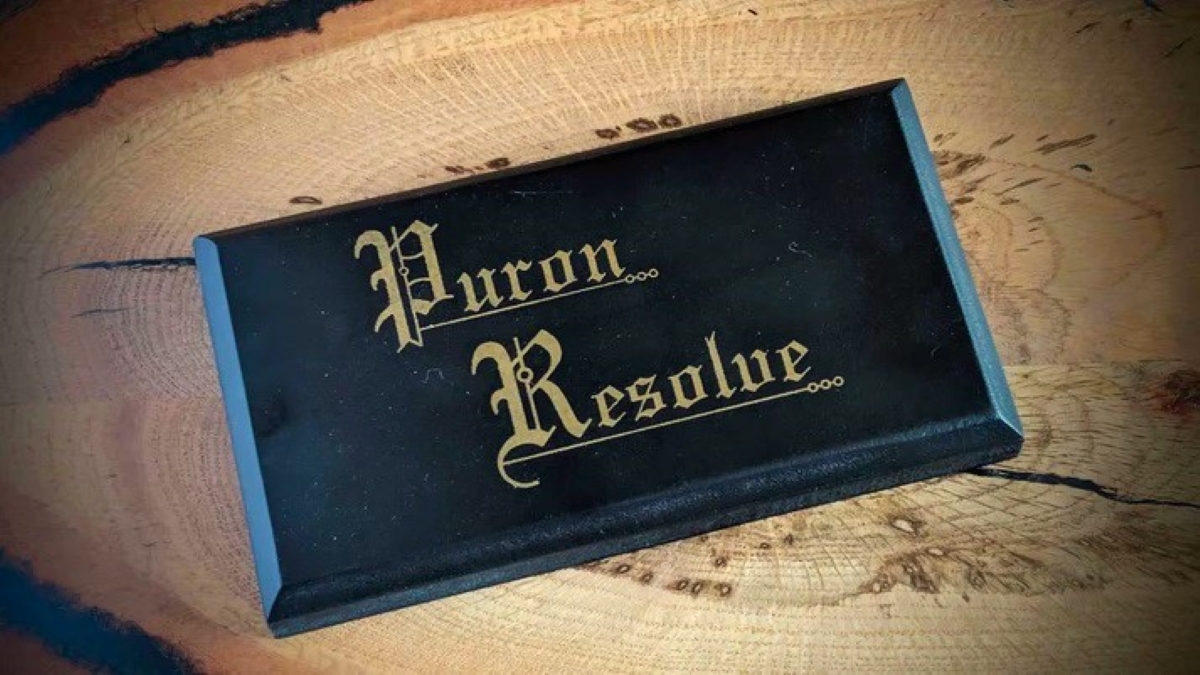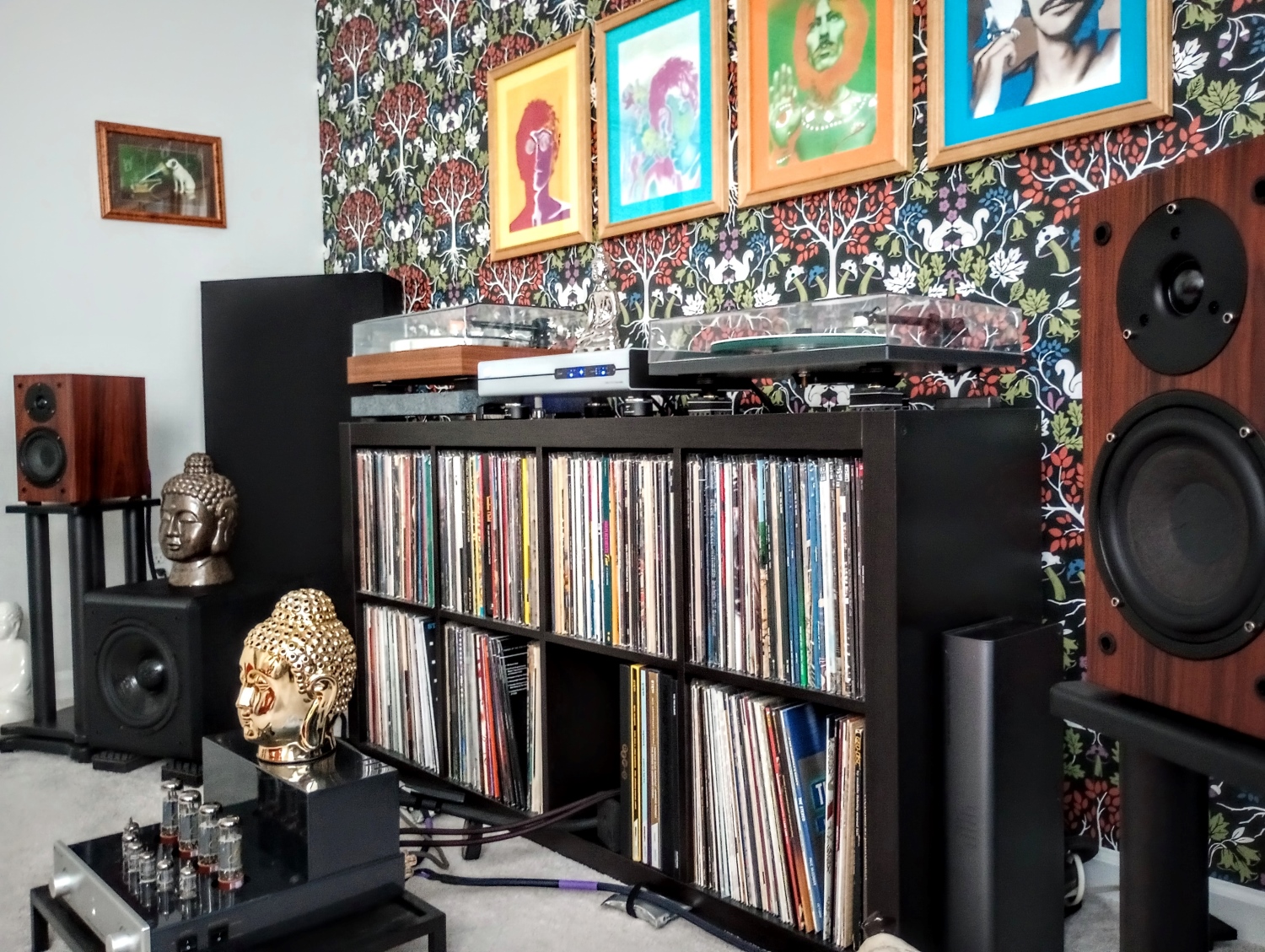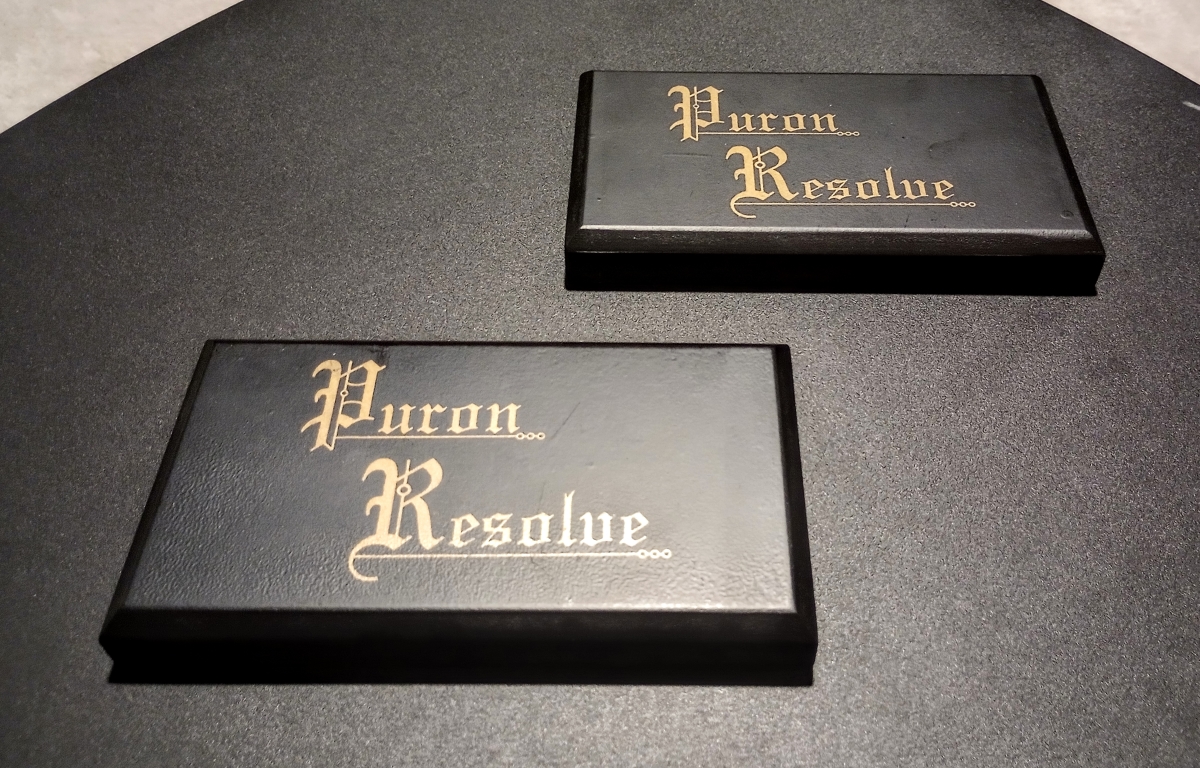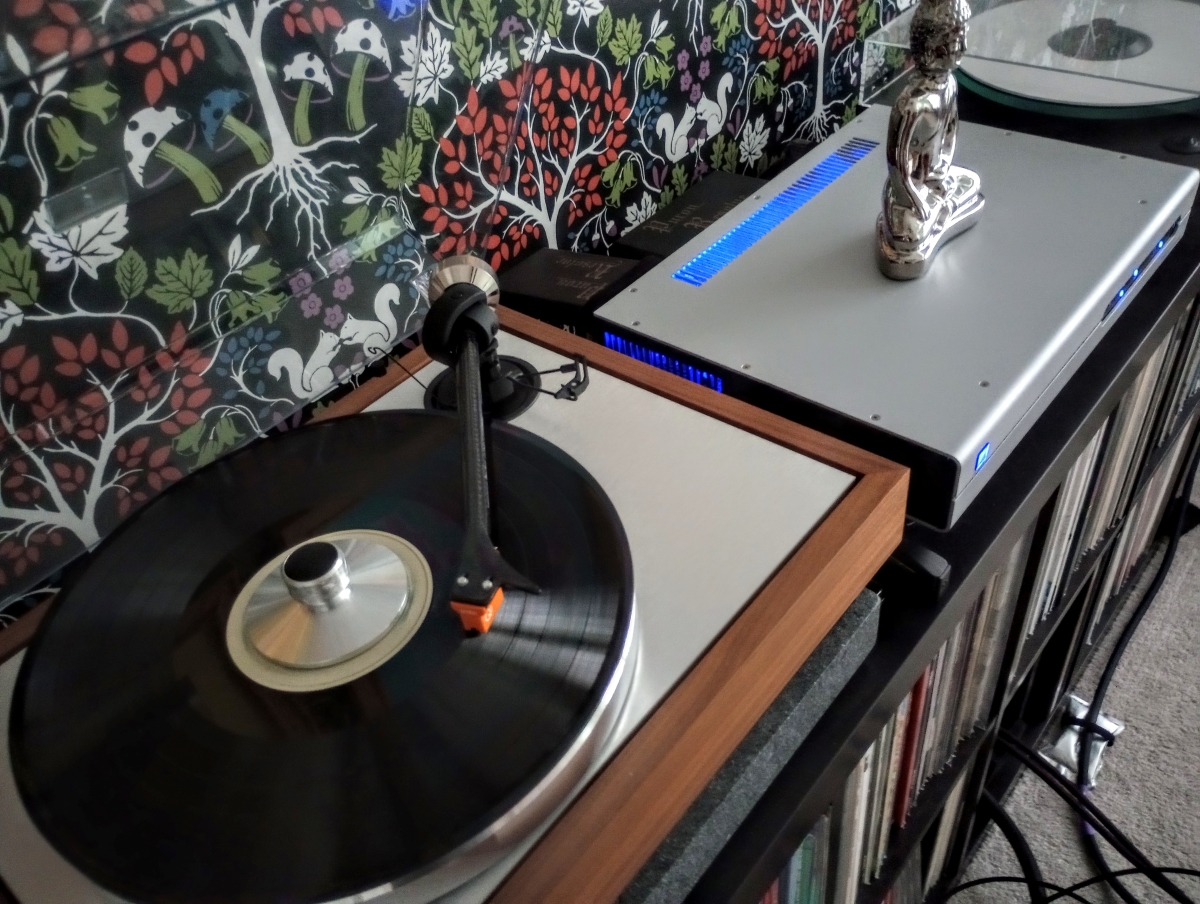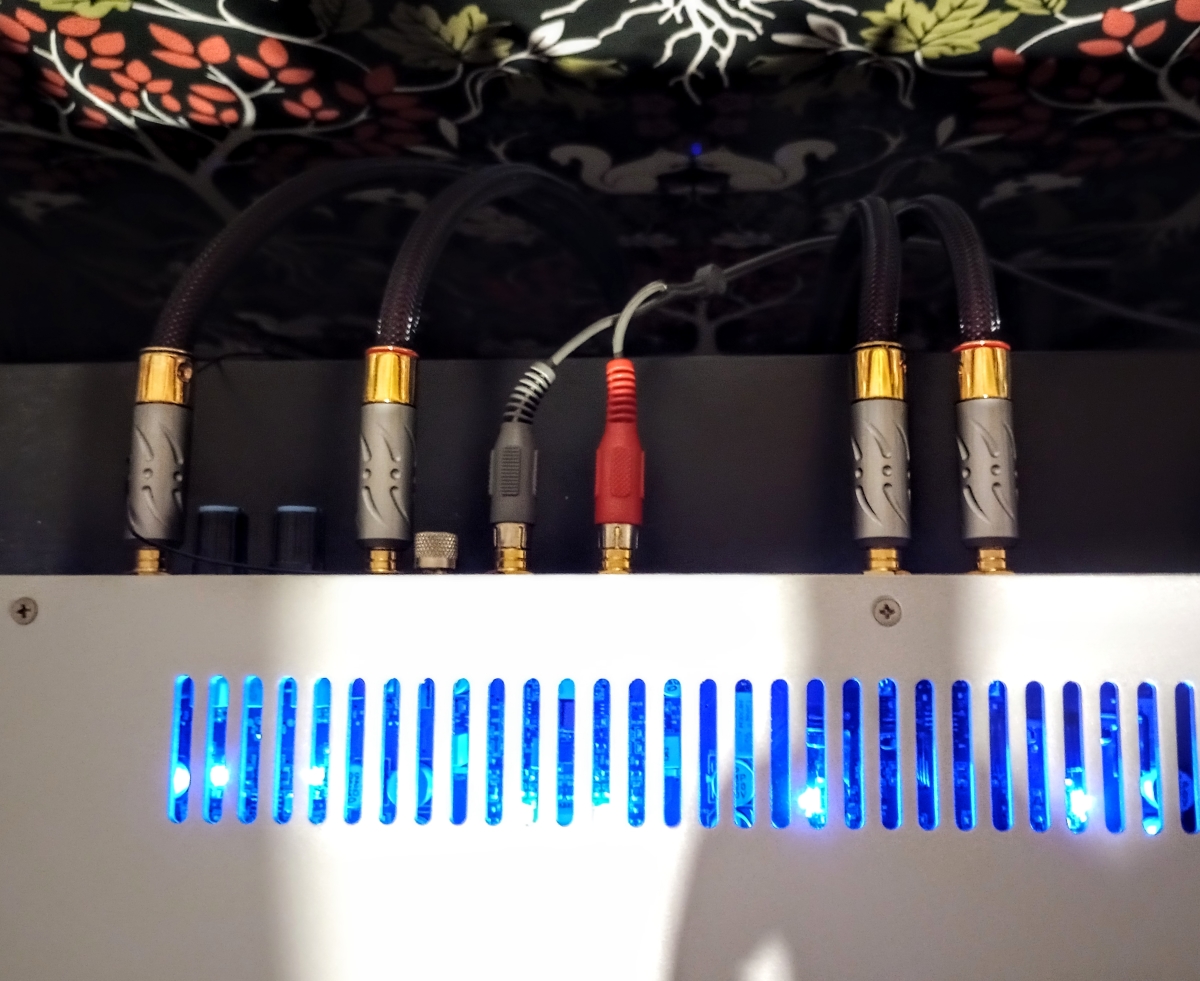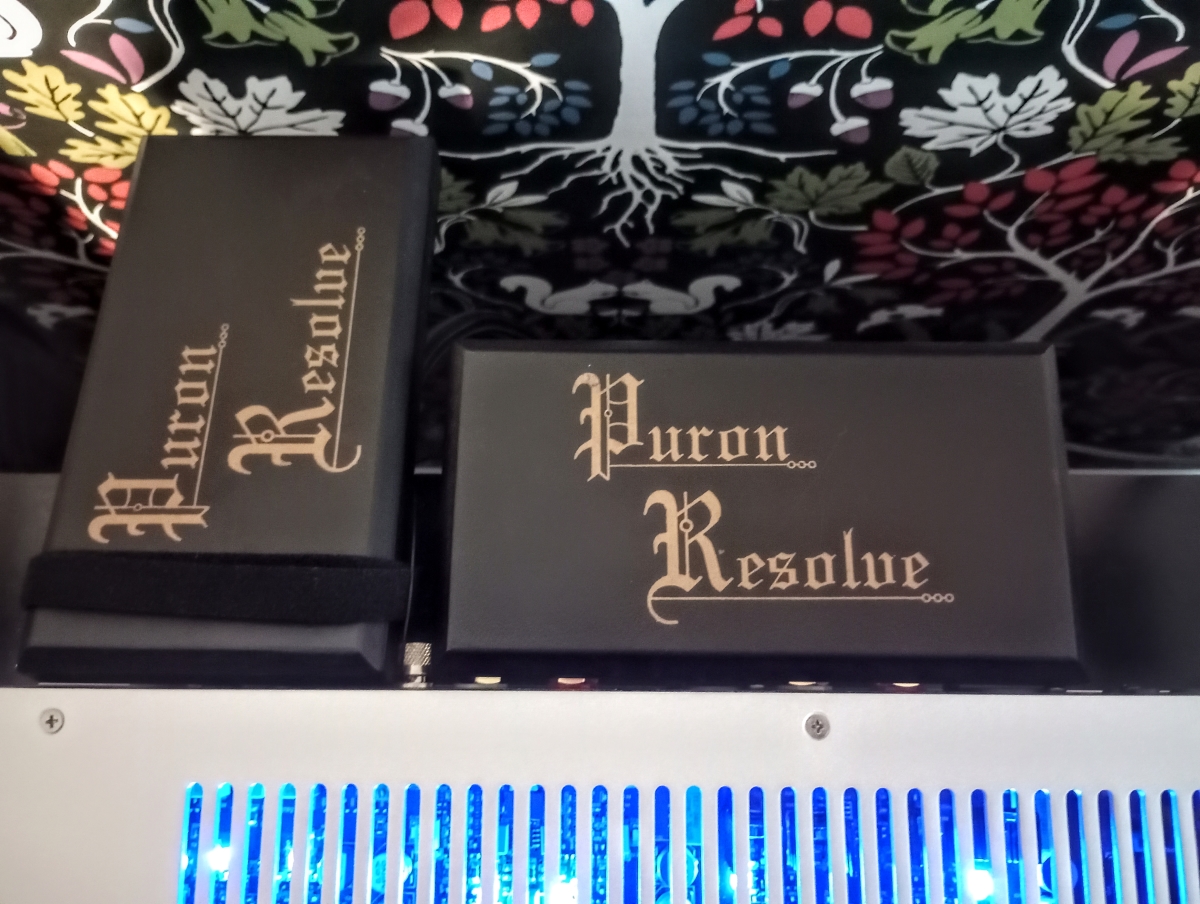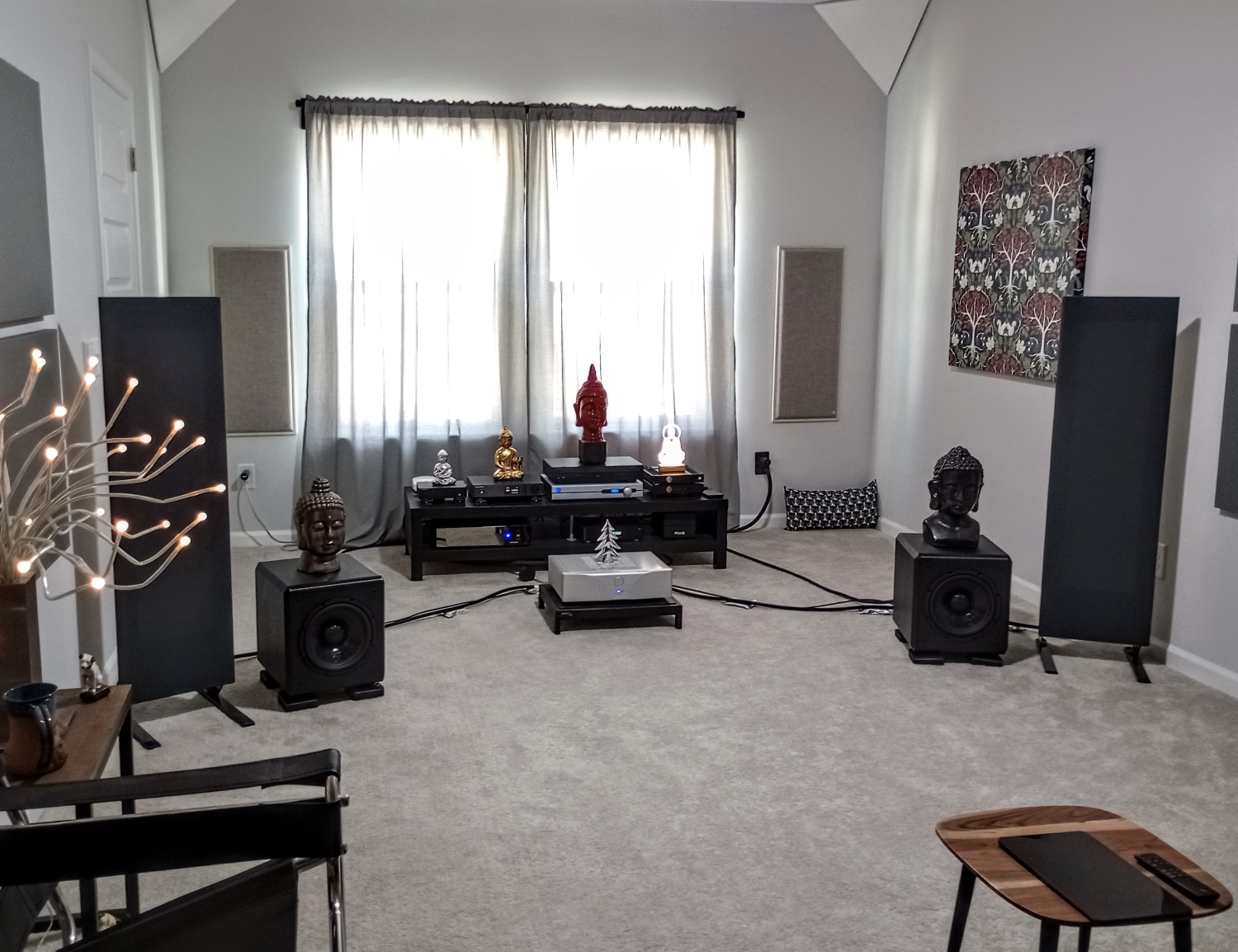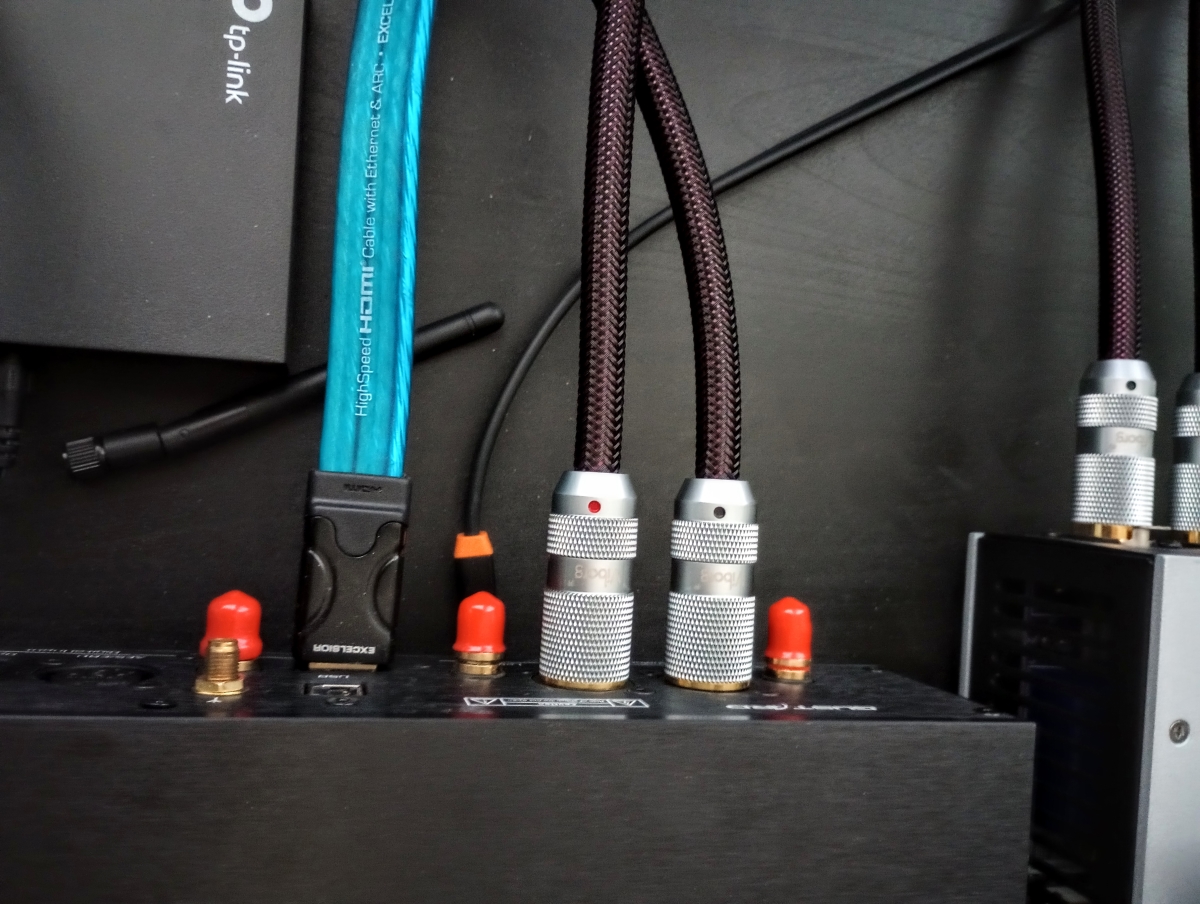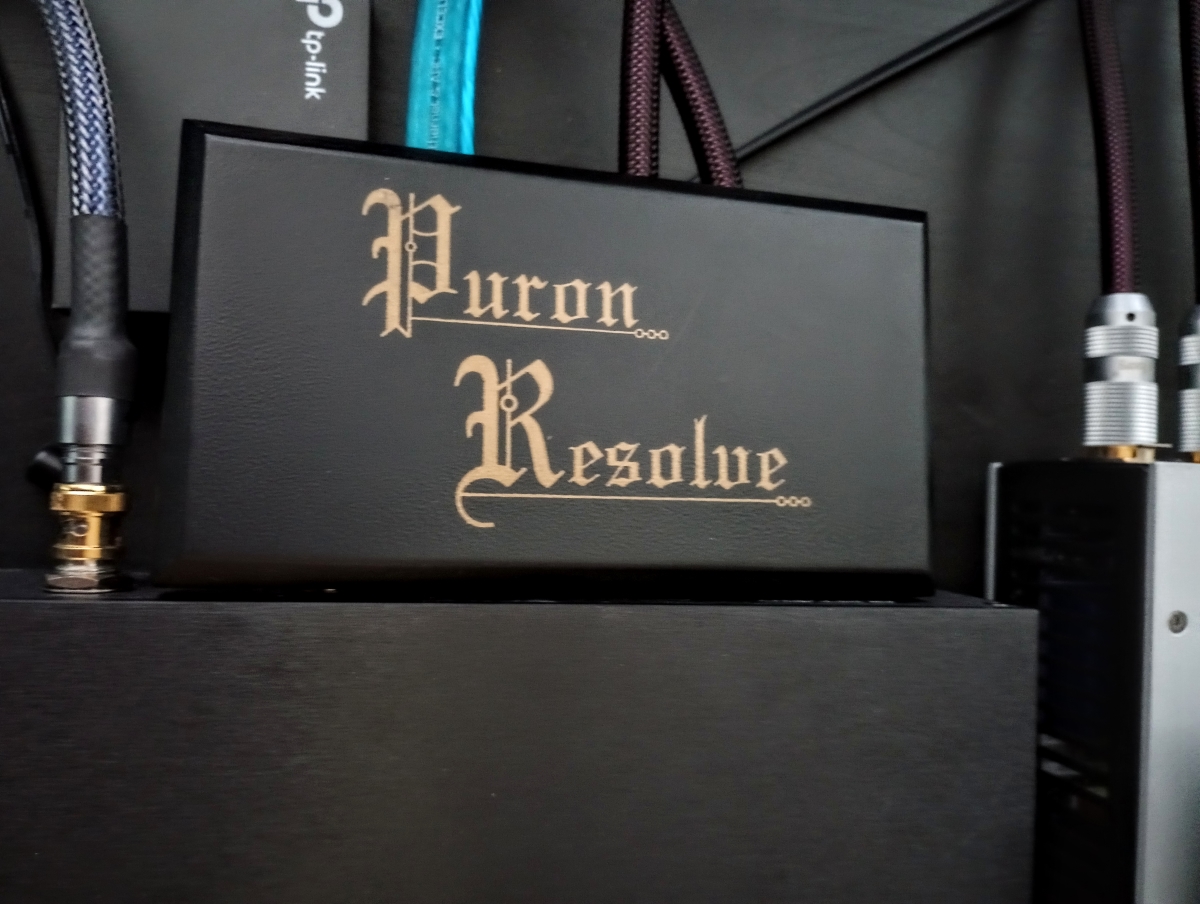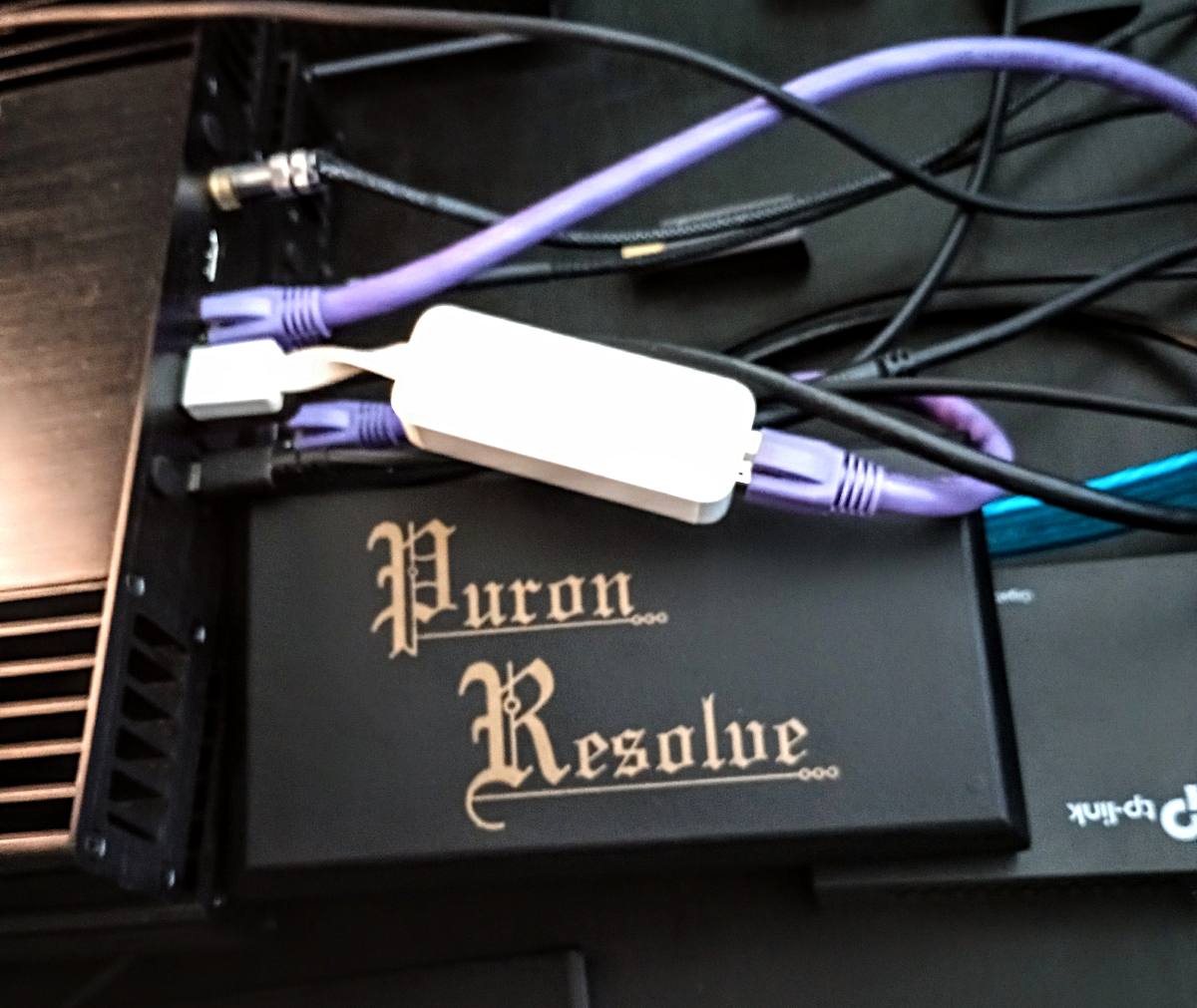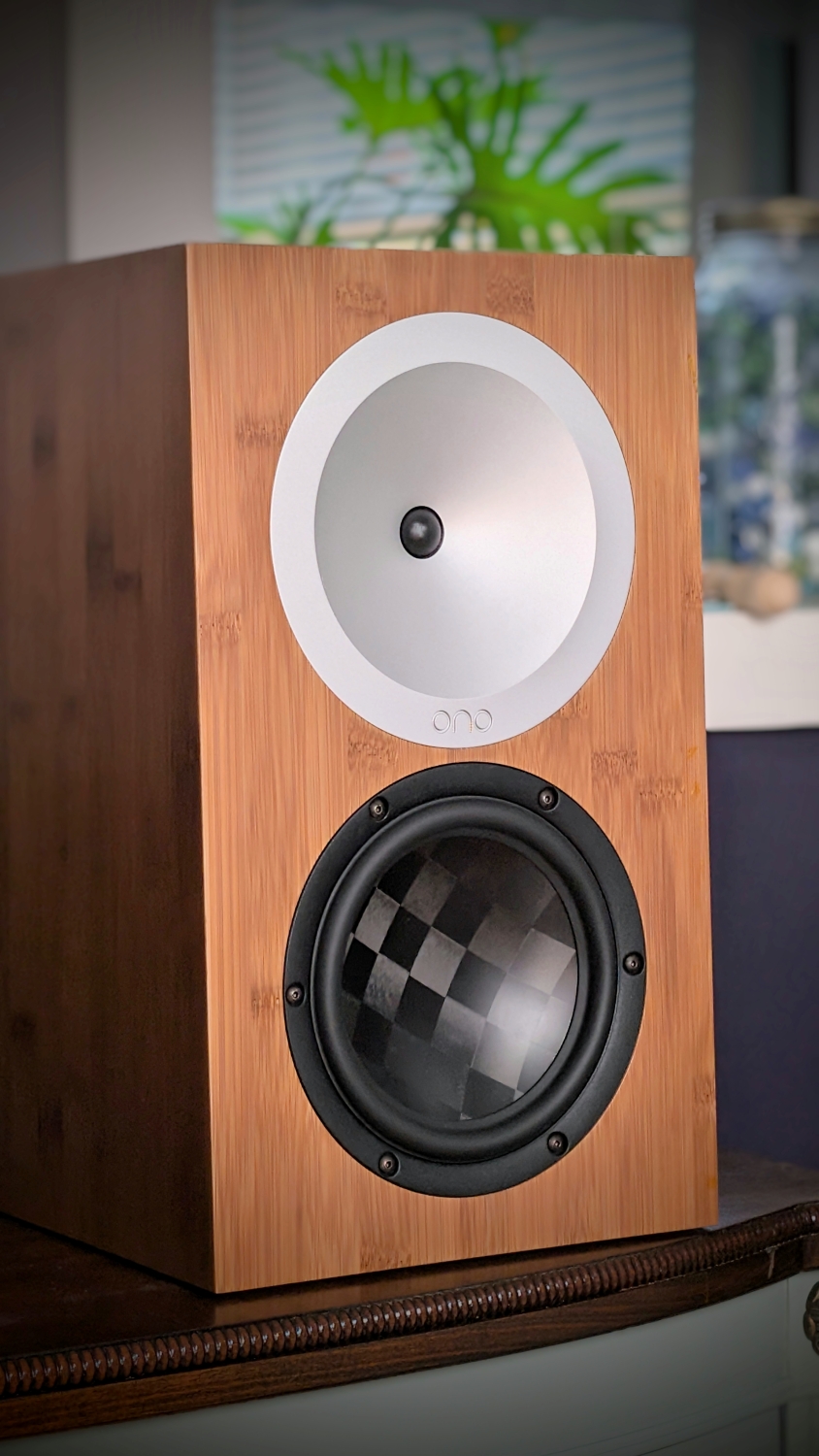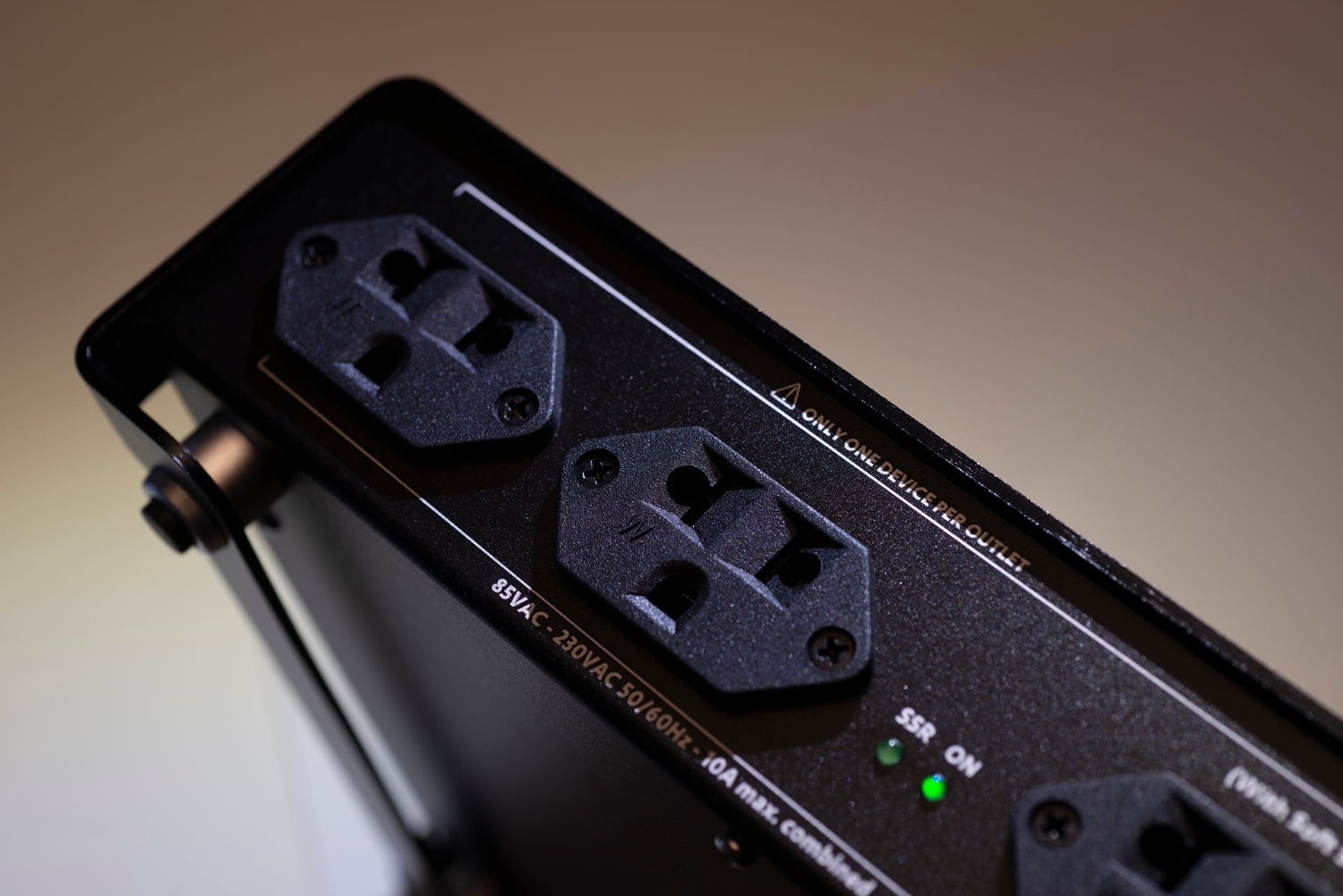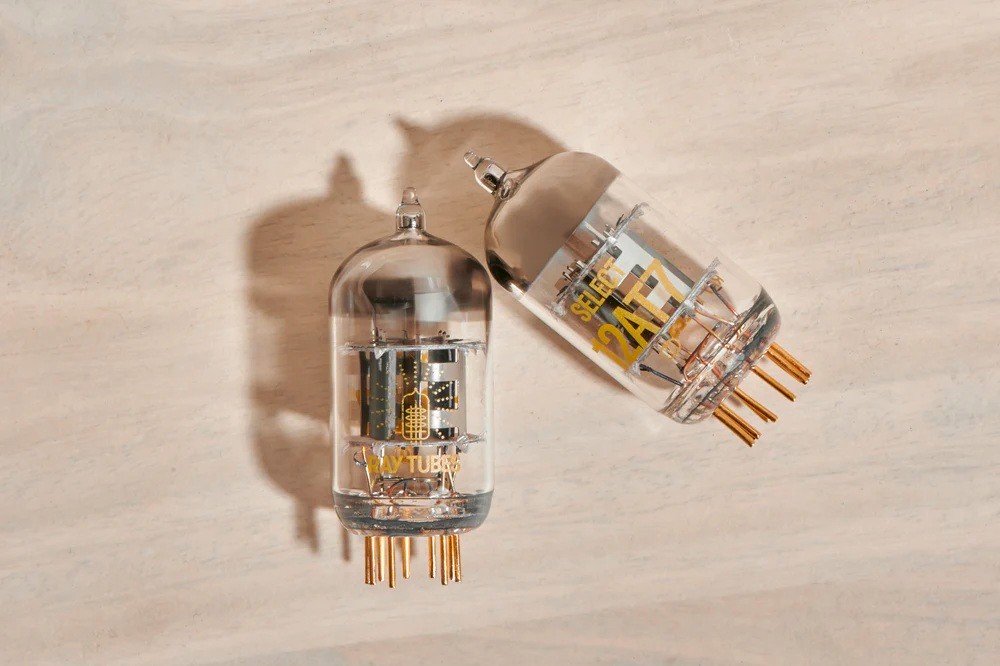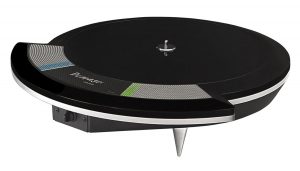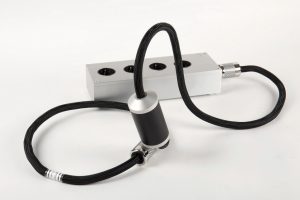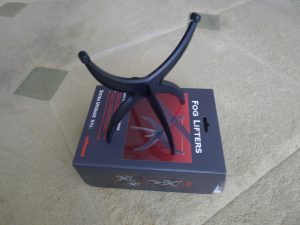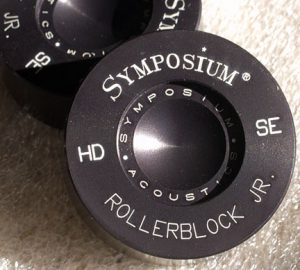In my recent review of the Puron AC Power Conditioners, I was struck by the abundance of amazing and relatively inexpensive enhancements available to substantially improve the performance of your audio and video systems. Those include devices and accessories of every make and manner that, based on their outward appearance, would seem incapable of providing any real level of refinement. I've encountered many such devices over the years, whether at audio shows, dealer showcases, or in the high-end systems of friends. Where the removal or addition of specially designed dots and the like can be objectively shown to make a discernible difference to a system's sound. That was my experience with Puron's AC Power Conditioners, which despite their compact size and out-of-sight, out-of-mind placement strategy offered a tremendous level of improvement to my systems here in South Carolina. You can read the full review HERE.
One of the most pervasive problems faced by high-end audio and video systems is Radio Frequency Interference, or RFI, which can emanate from many sources inside or outside the listening environment. RFI can be caused by radio and television signals, or even cellular networks, and can be transmitted to your system by either the towers that broadcast those signals or the equipment (like radios, televisions, or mobile phones) that receives them. RFI can even be caused by weather events, like lightning, solar flares, or auroras (northern/southern lights). I've been experiencing significant RFI—particularly in my analog system—ever since my move to South Carolina eighteen months ago.
At my old location in hilly, rural North Georgia, my audio room was in a bermed basement that was shielded by 12 inches of concrete on three sides, as well as being completely immersed within a hillside that faced north and away from any radio or television broadcast signals. And it was positioned quite literally within a ravine; at its rural location that was waaaay out in the sticks, over-the-air television signals and even cellular reception was nearly impossible. I rarely encountered a significant level of RFI there, and that probably also helps explain how the AC power spectrum was completely quieted by the use of the AudioQuest Niagara and Edison equipment. Which, to my great surprise, didn't completely control that level of AC noise here in the Low Country of South Carolina. Where the terrain is relatively flat, and there are no hills or mountains to block the signals from radio, television, or cell phone towers. So RFI, especially from broadcast sources, can be a bit of a problem.
RFI Rears its Ugly Head in the Low Country
Clicking on my name in the header above will reveal the components in my dual audio systems here near Charleston, South Carolina. One of them consists of digital source equipment and has been designated the "digital room," while the other features an entirely analog complement of sources, and has been assigned the moniker "analog room." And that room has been the source of most of my problems, which only really became apparent when I decided to again set up a dual turntable configuration last year. That setup featured separate phono preamps for each table, which had never presented a problem back in Georgia. But I've been fighting it from the get-go here; the very first time I switched on my mono cartridge-equipped Rega Planar 2 table that was attached to a Sutherland phono preamp, I picked up a radio broadcast at almost full volume across the loudspeakers. Months of experimentation with placement of the dual phono preamps and careful cable routing helped to somewhat alleviate the situation. When the PS Audio Stellar phono preamp arrived last December, it streamlined my connection conundrum with its single-box ability to support two turntables. That and a complete system upgrade with more robust interconnect cables from Audio Art Cable went a long way towards solving my problems—or at least it minimized them to the point of seeming insignificant.
Mark Schifter of Vera-Fi Audio had just the thing for me: the new Puron Resolve RFI Eliminators. Their name accurately describes their function; the Puron Resolves eliminate RFI from your system, while allowing you to achieve more resolving musical results. Puron products are designed and manufactured in Thailand by Sudkee Chongmankhong, a brilliant audio designer who prefers to go by Sudkee C. His exceptional designs reflect his brilliance with audio circuitry by helping your system eke out every measure of available performance, and also by eliminating the sources of noise that work to prevent your system from achieving audio perfection. As I mentioned in my review, I'd already experienced superb results with a pair of his Puron AC power conditioners in both my audio systems and with my 65-inch flatscreen television. Those experiences definitely buoyed my expectations for what the Puron Resolves might do to help rid my analog system of pesky RFI noise. Mark offered to send a pair of the Resolves; they've found that frequently, more than one may be necessary to achieve good results. No online information was then available concerning their function or system implementation, and no printed specifications were available. I actually hadn't seen any images for the Resolve, and had no idea what would be arriving in the package from Vera-Fi Audio.
The Puron Resolve RFI Eliminators Arrive, Along with Additional System Problems
Upon opening the package from Vera-Fi, I was immediately surprised to find that it only contained a pair of wooden blocks with a very stylized appearance. The Puron Resolves are made from a wood composite material and are finished in solid black with a metallic gold Puron Resolve logo on the face of each wooden block. The blocks measure 6.65 inches x 3.2 inches x .75 inch, and are very lightweight, weighing less than six ounces. They're designed to be placed on AV cable inputs or outputs from preamps, amps, or digital equipment, and even on loudspeaker connections; there's a myriad of choices where the Puron Reserves can be placed depending on the equipment used. Puron provided a brief YouTube video that helps explain some of the problems that the Resolves are intended to address, and also to highlight how they can be implemented in various configurations with your equipment.
Only two types of connections were noted by Puron with regard to any lack of effectiveness from the Resolves; they don't seem to provide any benefit to equipment that uses optical connections, and they also aren't suggested for AC power connections. If, like me, you already have a Puron AC conditioner ahead of your AC connections, you're already covered on that front. And the Puron Resolves very much follow the "out-of-sight, out-of-mind" attitude of the Puron AC devices. My plan was to use them in combination with the PS Audio Stellar phono preamp, which seemed to me to be the best starting point for the RFI issues I was experiencing.
It's recommended that you experiment with placement options; for example, you can place the blocks directly on top of the connecting cables, or perhaps directly below them. It may be necessary to place them at a slight angle with regard to the affected cables, or you may even need to place the blocks on their sides in relation to the connected equipment. Regardless, you'll need to use your ears to determine which implementation offers the greatest reduction of RFI noise. I chose to start by placing one Resolve block on the input cable connections on the PS Audio Stellar phono preamp, and the other Resolve block on the output cables that run to the PrimaLuna EVO 300 integrated amp. That's exactly what I did, but as typical, I had multiple equipment and music reviews ongoing simultaneously, and unfortunately, problems with my PrimaLuna EVO 300 tube integrated amplifier caused the Puron Resolve evaluation to get sidetracked for the short term.
After almost a week of consultation with Upscale Audio in southern California, it was determined that the EVO 300 needed new tubes, and it took another week for a matched pair of NOS Brimar 12AU7 output tubes and a matched quad of premium Gold Lion KT77 power tubes to arrive. Weeks later, and now that the new tubes are fully settled-in, they've solved everything, and we're back in business. But if all that wasn't enough to deal with, one of the panels of my LRS+ loudspeakers malfunctioned, and I'm still in the process of working with Magnepan in an attempt to get it repaired under warranty. That process appears to be on the slow boat, so for the mean time, we're back to the original Magneplanar LRS loudspeakers in the digital room. They don't have the same top-end clarity of the LRS+, but they do provide a compelling musical presentation. Still, the order of the day was the completion of other in-process reviews, hence further delays in fully exploring the benefits of the Puron Resolve blocks.
Setup and Listening Results in the Analog Room
For starters, I first took a listen to the system without the Resolves in place and no music playing over the analog system; the new tubes are much quieter than the original stock PrimaLuna-branded tubes they replaced, so you can really crank the volume without introducing any significant noise. It's become a process of mine to occasionally take a listen to my system with the volume cranked with no signal applied, simply to hear any noise spectrum that may be present in the background. That said, with the volume of the EVO 300 cranked to about 2 or 3 o'clock on the dial (using that same clock analogy, I normally listen between 11 and 12 o'clock), a slight level of hash was present in the signal. Placing a Resolve block on the input cables (it sits there without issue) resulted in a reduction of the hash, and I A/B'd the results several times to confirm what I was hearing.
At that point, I added the second Resolve block to the output cables; this was a bit trickier, and I ended up using a small Velcro cable tie to hold the Resolve in place on the output cables. This yielded an additional incremental decrease in the hash I previously heard, almost to the point that it was quite nearly gone! Again, I A/B compared those results as well, and each time I added the second Resolve block, I heard less noise. Reducing the volume to a normal "loud" position for me (about 11 o'clock on the volume dial) completely eliminated any noise. And this is with the Moving Coil path of the Stellar phono preamp active; because my Ortofon Quintet Bronze MC cartridge has such a very low output, the 66dB gain setting on the Stellar is required, so it's always the worst culprit if noise is an issue. At my normal volume levels with the Puron Reserves in place, there was no noise—nothing.
I then experimented with placing the Puron Resolve blocks underneath the cables, as well as placing them at angles in relation to the cables, and again A/B'd to hear any differences. I ultimately decided that the greatest benefit with regard to the Stellar phono preamp was with the Resolve blocks sitting on the input and output connections, which was my initial configuration attempt. Listening to music was the clincher; I put on the Impex Records 1STEP LP box of Patricia Barber's Nightclub, and the sound quality was beyond superb, with a much lower noise floor than I'd previously been hearing with this record in my MC setup. Lowering the noise floor allows you to hear a greater level of detail in the music, and by hearing a musical presentation that's free from any kind of RFI grunge that might have been lurking in the background, the resulting sound quality is, well, much more musical! I achieved similar results with the moving magnet input of the Stellar phono preamp, and although the gain required for the Ortofon 2M Mono cartridge is only 45 dB, the background noise in the spectrum was much less with the Puron Resolves in place than without them.
I then proceeded to move the blocks to additional locations with my equipment; I placed them on the loudspeaker terminals, I also placed them on the terminals of the PrimaLuna amplifier, and even placed them on the AudioQuest Niagara 1200 power conditioning unit. None of those locations produced the pronounced results that I achieved with the blocks placed on the Stellar phono preamp, and that's where they'll stay in the analog room. As the addition of more Puron blocks is purported to produce a cumulative effect on your system, I didn't really feel that I had enough blocks on hand to fully evaluate their effectiveness when used in other configurations. But the two blocks made a definite difference to the signal the Stellar phono preamp was transmitting to the PrimaLuna amplifier.
Setup and Listening Results in the Digital Room
The digital room is a completely different animal than the analog room, and for a multitude of reasons. First of all, the network connection to my Euphony Summus music server and Euphony Endpoint streamer is buffered by a fiber optic conversion setup, which eliminates any noise that might be transported by the network. It yields a whisper quiet digital output, and I'm also currently using the i2S output of the Euphony Endpoint to connect to my Gustard X26 Pro DAC; i2S is a superior connection, and is less prone to noise than the ubiquitous USB connection. My balanced preamplifier is the PS Audio Stellar, which uses what PS Audio calls an analog gain cell for volume control; it's a remarkably low noise configuration that's all analog and employs no stepped resistors or pots to make volume adjustments. Finally, the amplifier is a Naiu Laboratories Ella stereo amp, which employs a novel hybrid circuit that combines a power supply similar to those used in Class D amplifiers with a more conventional Class A/B circuit design that's been voiced to provide a sound similar to that of a single-ended triode tube amplifier. And it's exceptionally quiet in idle state. The entire system is fully balanced from end-to-end, and with no signal applied and the volume raised to maximum, emits no sound whatsoever—not a peep, even with your ear against the loudspeaker panels.
That's in stark contrast to the analog room equipment, of course, where the amplifier is not completely quiet when idling. The tubes have their own distinct sonic signature, and the PS Audio Stellar phono preamp's need to raise microscopically low cartridge coil signals with ridiculous levels of boost makes them much more prone to RFI noise. In the digital room, I spent a protracted period of time listening to the equipment with the Puron Resolves in place using every possible setup configuration, and at every point across the connection spectrum, but it was difficult to quantify any actual improvements to the noise spectrum of the digital system.
At that point, I decided to simply play some music, and A/B'd between having the Puron Resolves in place, and the normal, status quo setup. I put on the DSD files of Glenn Gould's version of Bach's Goldberg Variations, which is a recording I know inside and out, and with the often delicate nature of the music, it would be easy for me to pick out any differences. This was much more labor intensive versus the process in the analog room, which has a significantly reduced level of equipment involved. With the Resolves above the interconnect cables and below them, at angles and sideways, and in place with both the power amp and the preamplifier, I couldn't really discern any differences.
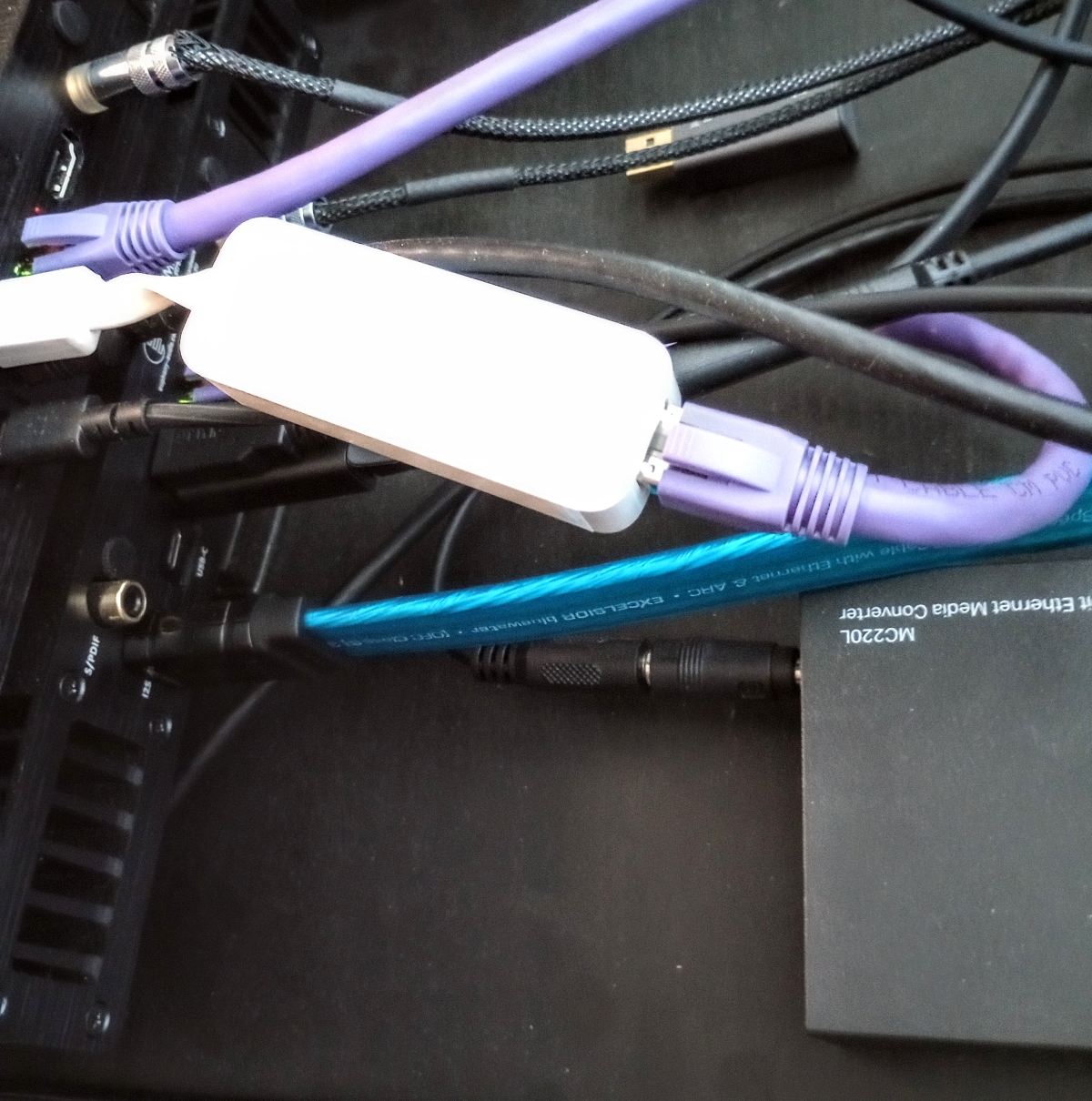
In Puron's video, HDMI connections were mentioned as a frequent source of RFI noise. And even though my digital system's pair of i2S connectors technically are not HDMI's, they do use an HDMI cable to make the connection. Bingo! By placing the Puron Resolves such that they were making contact with both i2S input and output connections on the Euphony Endpoint and the Gustard X26 Pro DAC, I could instantly hear the recording rendered with greater clarity. It seemed less like a recording of Glenn Gould, and more like he was actually in the room! I have a playlist of songs loaded onto my Euphony server that I use for system demos and equipment evaluation; some of them offer music with very natural presentations of acoustic instruments and vocal accompaniment. Like Suzanne Vega's "Song of Sand" from her album 99.9 Fahrenheit Degrees, the song took on greater presence in the finger picked acoustic guitar, and especially in Vega's vocal, which now seemed uber realistic compared to how it normally sounds on the stereo. Jennifer Warnes' "Famous Blue Raincoat" from the album of the same name was also rendered with a much greater degree of you-are-there realism. In Tom Wait's classic "Small Change" from his album Small Change, as the song begins, he lights a cigarette, and as he strikes the match, it's as if he was standing in front of you! He then takes a drag from the cigarette, then exhales, and you can literally feel and smell the cigarette smoke being blown in your face. I've heard this song countless times, but never with the extreme realism that having the Puron Resolves in place offered it. These sort of comparisons went on literally for hours; every time I inserted the Resolve blocks at both i2S connections, the improvement was obvious.
Final Thoughts
Adding enhancements to your systems with the intent of improving its overall sound quality is always an experiment and a work in progress, and it's ultimately up to you to decide whether you feel the results justify the cost. Especially where the manufacturer's model seems to revolve around the improvements wrought by the addition of multiple units. That's true of inline devices that either actively filter the AC power or music signal, but it's especially true of devices that simply sit nearby to equipment, and are also expected to yield a similarly positive result. This is getting much closer to Deep Blue Sky territory, where it seems totally impractical that the devices, dots, or blocks in question could actually enhance system performance. I pretty much sat skeptically on the fence for decades about any purported benefits of such enhancements, but since I've gotten out into the world and actually heard them in many systems—including my own—I've definitely had a change of heart. To me it's really only Deep Blue Sky if you remain unconvinced following A/B comparisons, which at least offer observable evidence of improvements.
When I first entered my analog room to start the Puron Resolve evaluation, I carried my laptop with me to jot down any impressions I might have made regarding the proceedings. In no time at all, I realized that my laptop was projecting RFI that was being picked up by the cables inputting and outputting from the PS Audio Stellar phono preamp! That brief interlude has definitely informed my approach to bringing even my cell phone into the listening room during critical evaluations.
While the source of the magic performed by the Puron Resolve blocks is proprietary, I can't argue with the fact that they actually work by absorbing or otherwise mitigating the RFI noise that's been troubling my audio systems. And by allowing my equipment to function at a higher level of efficiency and achieve greater transparency and musicality. Sudkee C., once again, my hat is off to you—another of your brilliant designs has gotten me so much closer to the music that I love! At $295 each, the Puron Resolve RFI Eliminators aren't inexpensive, but in relation to the total cost of a typical high-end audio system, the observable results they produce are worth every penny. Thanks to Mark Schifter and Vera-Fi Audio for the review opportunity! The Puron Resolves come very highly recommended!
Puron Resolve RFI Eliminators
Retail: $295 MSRP
Vera-Fi Audio
All photos courtesy of Vera-Fi and the author




